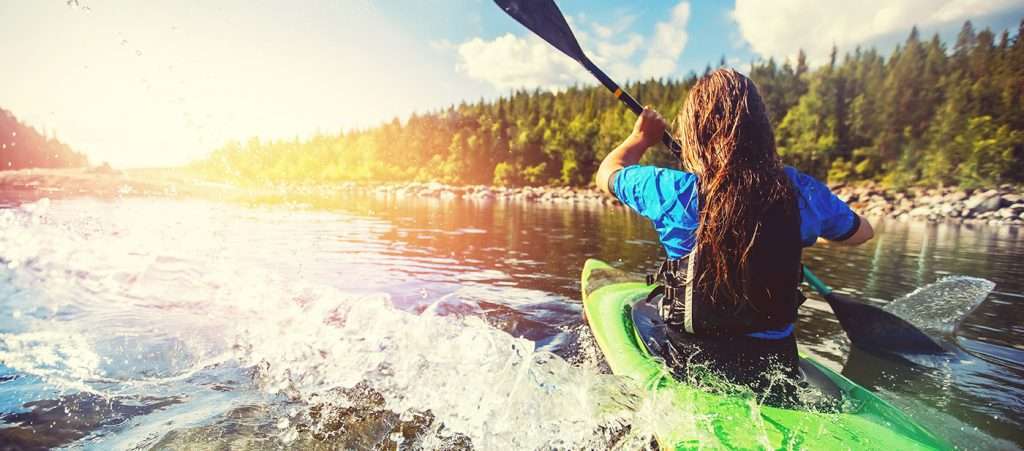It’s no secret that freshwater kayaking is significantly easier when you go with the current. As long as there are no visible obstacles ahead, you can sit back and let the current do all of the work. This is a relaxing way to enjoy the sights and sounds of the outdoors from the comfort of your kayak. However, certain locations may require ‘upstream’ kayaking to access. Depending on the speed of the water, along with your current physical fitness level, you might be able to paddle upstream. For more information on how to kayak upstream, keep reading.
Scout From Land
Before you even think about kayaking in the opposite direction of the current, pull your kayak over to the shore so you can scout it out from land. As you walk along the shore, pay close attention to things like current speed, rocks, bends and water level. Remember, the water always feels faster when you are in a kayak, so don’t underestimate the power of a river’s current.
While you are scouting the river, go ahead and plan a course for you to travel. You’ll obviously want to avoid as many rocks as possible, while staying in areas where the water is moving the slowest. This will give you a clear plan of attack once you begin the tedious task of trying to kayak upstream.
Stick To The Shore
The single biggest piece of advice I can give to those trying to kayak upstream is to stay near the shore. As you may already know, the current is less intense around the shore; therefore, common sense should tell you that it’s easier to kayak upstream when you stick to the shore. If you scouted the area ahead of time, stick to your plan but use the shore to help you break past areas of difficulty. When you come upon a part of the river that seems to fast to paddle through, try going to the shore to see if you can go around it. The slow-moving water around the shore will make kayaking upstream a breeze.
It’s important to note that dam-fed rivers will become faster the farther upstream you go. In fact, you may not be able to make it all the way upstream. If the current is too much for you to handle, go back downstream. Trust me, it’s better to go back downstream rather than capsizing and potentially losing your kayak.

